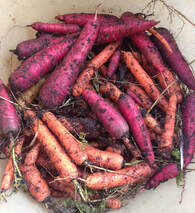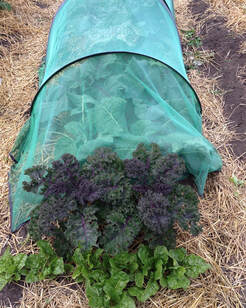
This past winter, I have been trying to make sense of some food and diet related trends, from books I happened to notice at the public library. Below are a few notes about what I read. I tried to look for common threads. I then attempted to figure out how these concepts might shape my personal food choices and what I will be growing in my gardens in the coming season.
My family eats mostly organic and locally produced food, and we try to avoid processed or fast food. We enjoy good health overall, though lately, I have made some observations in our well-being that has me wonder about our diet – nutritional choices I thought were reasonable and sound for the long term. Niggling issues such as mild inflammation, low thyroid, and digestive discomfort make me wonder if there is a connection to what I put on the table. Right now, our issues are all manageable and relatively mild, compared to the “pandemic” of diabetes, obesity and auto-immune diseases in the news.
So when I stumbled on food books that promise to heal body and mind, I started reading, thinking and planning. This topic is important to me as I love growing food, cooking tasty meals and baking!
First, I picked up “The Plant Paradox: The Hidden Dangers in Healthy Foods That Cause Disease and Weight Gain” by Steven R. Gundry.
The book focuses on the idea that plants protect themselves against predation and therefore, some veggies we eat contain lectins, a type of gluten that causes inflammation and stress, leading to disease and excessive weight. This was a bit of a shocker, as some of my favorite foods, including some that I love to grow in the garden, are on the hit list. Potatoes and tomatoes are in the nightshade family (along with peppers and eggplant), are high in lectins and should be avoided. Plants with seeds, such as cucumbers and squashes are also a no-no. Whaaat....I always store squashes for yummy winter soups! Then there are the grains, legumes and dairy. Foods we’ve consumed for decades.
Another book that caught my eye is called “Eat Dirt” by Dr. Josh Axe.
Here the focus is very much on restoring the biodiversity of beneficial bacteria in our gut. The author recommends avoiding antibiotic medication, foods containing artificial ingredients such as preservatives and additives, excessive sugar, hydrogenated oils, dairy and grains. In a nutshell, we are healthiest when we eat unprocessed food produced in healthy soils and when we have regular contact with a variety of beneficial microorganisms, rather than trying to sanitize the world around us. The ideas in this book are similar to previous reading I’ve been exposed to, and feel a bit less daunting. It’s encouraging that spending time in an organic garden has many benefits beyond the healthy food, such as reducing stress, exercise, aromatherapy, and contact with healing gut bacteria.
I have never felt compelled to follow a popular diet, but both the Paleo and Keto diets have been receiving lots of attention. I can’t claim that I have read a lot about these.
However, the “The Paleo Cure” by Chris Kresser also has some very good arguments for avoiding toxins and processed foods that often cause inflammation and damage the gut flora, such as sugar, gluten, and seed oils (soy, corn, canola, etc). The book is big on nutrient density, including naturally raised meats, organic veggies, and limited amounts of seasonal fruit.
Both “Eat Dirt” and “The Paleo Diet” remind me of a cookbook I’ve used once in a while called “Traditional Diets” by Sally Fallon.
Careful preparation of food, including soaking seeds, fermenting veggies, dairy and grains, and using all parts of an animal, are common themes. The idea of supporting locally produced food that honours the integrity of the natural ecosystem also appeals to me.
Finally, I read sections of “The End of Alzheimers” by Dale E. Breseden.
This book offers a very good explanation of the changes that happen to a person’s brain showing cognitive decline leading to Alzheimer’s. There appears to be a strong link between this disease and nutrition, as well as the importance of healing a “leaky gut”, regular exercise, proper sleep, reduced stress and elimination of mould and toxins in our work and home environment. There is also a strong genetic risk, but the book provides hope that the holistic program described in the book can improve symptoms.
Common Threads in these Books
The most important foods and ingredients to avoid are:
- gluten-containing grains, refined sugar, soda beverages, and refined vegetable and seed oils
- a diet rich in vegetables, naturally fermented veggies, eggs, and wild-caught fish
- consume naturally fermented unprocessed foods such as sauerkraut, kimchi, kefir or kombucha
- legumes, nightshades, fruit, meat (especially from animals on a grain/corn/soy diet) and occasional dairy
What – no Bread??
One of the most difficult recommendations is to reduce or even give up products with gluten containing grains. In our family, we love fresh bread and home-made, low sugar muffins and pancakes. One way to reduce the impact of gluten is to let lactic acid bacteria and yeasts ferment the flour, as when baking with Sourdough. I am the happy recipient of a sourdough starter and have been experimenting with sourdough breads, muffins, crackers, pancakes and waffles for a few months. It requires some planning skills and takes a bit more time, but I enjoy the challenge.

In the rather small sampling of books I read above, there is of course no total consensus, but I find the recommendations sensible. Our new Canada's Food Guide also covers some of the suggestions in the books.
At the very least, I feel that my efforts to serve up vegetables with every meal, cutting out sugar and consuming naturally fermented foods regularly are fairly easy step.
Finally, growing lots of organically produced vegetables are a huge priority for me. While it certainly takes time and effort, the variety and quality of the food is worth it 100%. Check out my next post for my recommendations for great veggies you can grow.
 RSS Feed
RSS Feed